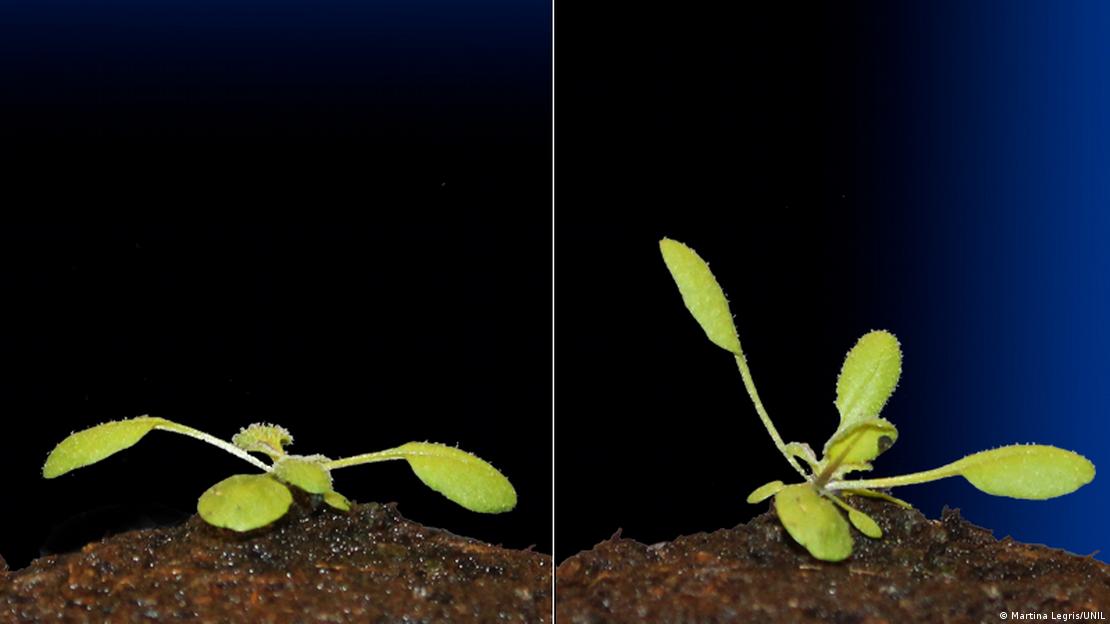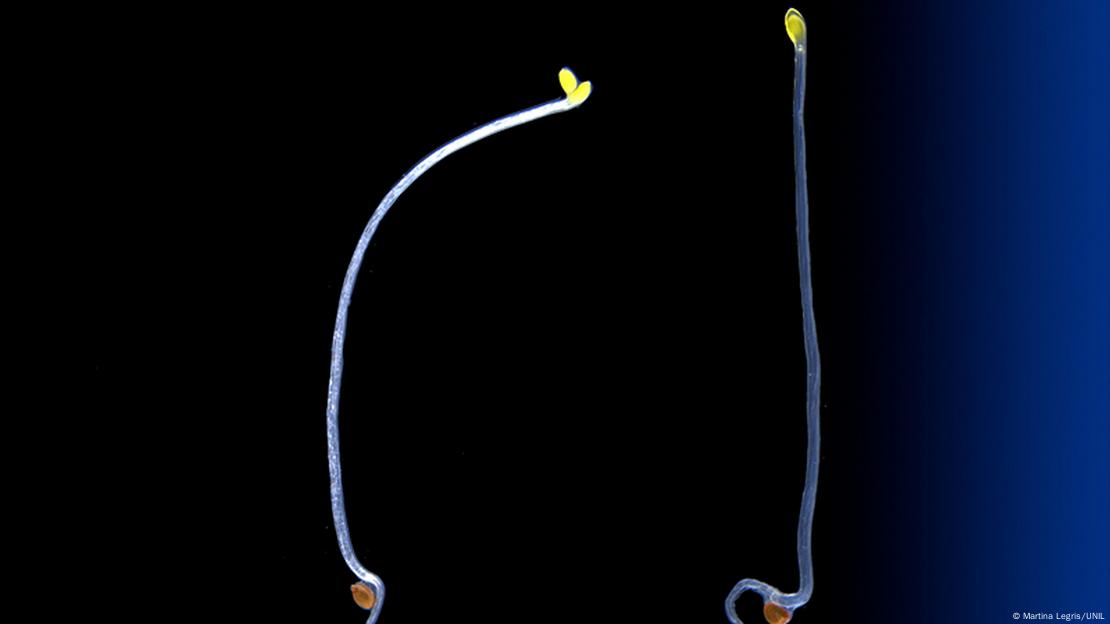Plants don’t have eyes but somehow know how to stretch toward the light — in some sense, they can “see” it. How?
Scientists looked to answer this question in a study published in Science November 23, 2023.
They knew that plants had a way of deciding where or how to grow in the direction of light — a process they call phototropism.
Through phototropism, plants are able to position their leaves toward the sun to receive the most light possible.
This light-directed movement in plants was first discovered by Charles Darwin and one of his sons near the end of the 19th century. They found that when a plant was placed in a dark room lit only by a candle on one side, it bent toward the light.

Do Plants See Like Humans?
Phototropism is facilitated by photoreceptors. For the study just published, lead researcher Christian Fankhauser said photoreceptors were a plant’s equivalent to receptors found in the eyes of humans and other animals.
But there are differences between the receptors found in eyes and the “seeing” receptors found in plants.
First, said Fankhauser, who’s based at the University of Lausanne, the seeing receptors occupied by humans and other animals are solely restricted to our eyes. Plants, on the other hand, are covered in these receptors, allowing them to “see” from all sides, Fankhauser said in an interview with DW.
It’s like having eyeballs all over your body.
The second difference is the fact that while humans and animals can perceive actual images, plants can only perceive elements of light — its amount, color, duration and direction.
How Do Plants Detect the Direction of Light?
Fankhauser and his team studied the mechanisms of specific photoreceptors called phototropins, which track the direction of light.
Phototropins are “similar to a solar panel that can track the position of the sun so that it always gets the maximum amount of photons that can then be used to transform solar energy into electrical energy,” Fankhauser said.
Although scientists understand that phototropins “see” the direction light is coming from, they have not, until now, understood which mechanisms within phototropins act like eyes.
In their study paper, the researchers explain they were able to figure this out through the observation of a mutant thale cress plant.
Thale cress plants have a white stem, but the plant in question had a transparent stem, which signaled to the scientists it was failing to respond to light properly.

After some testing, they found that the mutant plants with the transparent stems had a water-like liquid in intercellular channels within the plant that, in the non-mutant plants, were filled with air.
They think the presence of this air is what allows the plant to read the skies for light sources and grow towards the light.
“Air and water have different refractive indices. This leads to light scattering as it passes through the seedling. We have all observed this phenomenon when admiring a rainbow,” said Marina Legris, a postdoctoral fellow in Fankhauser’s group and co-first author of the study.
And that’s how plants, like moths to a lamp, push toward the light — through air.






















